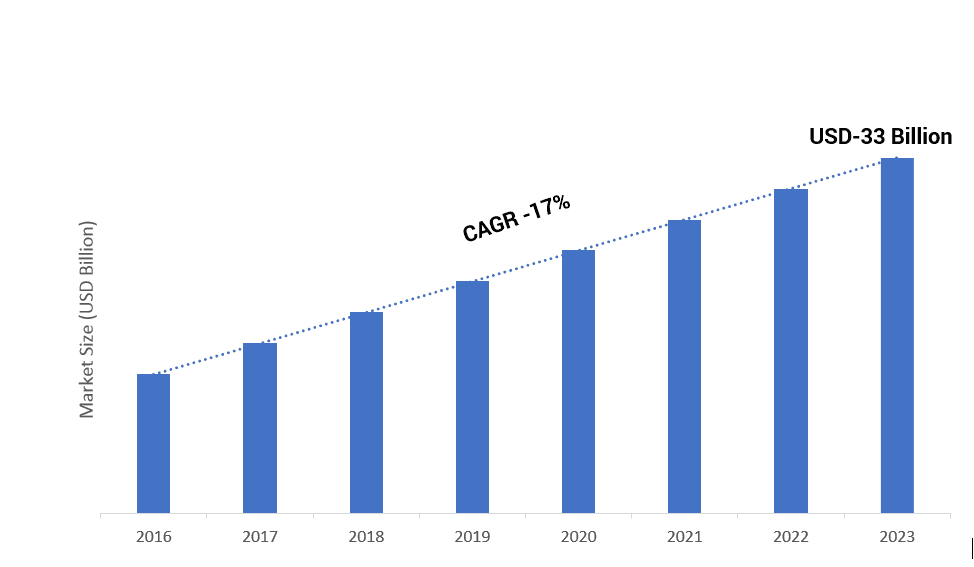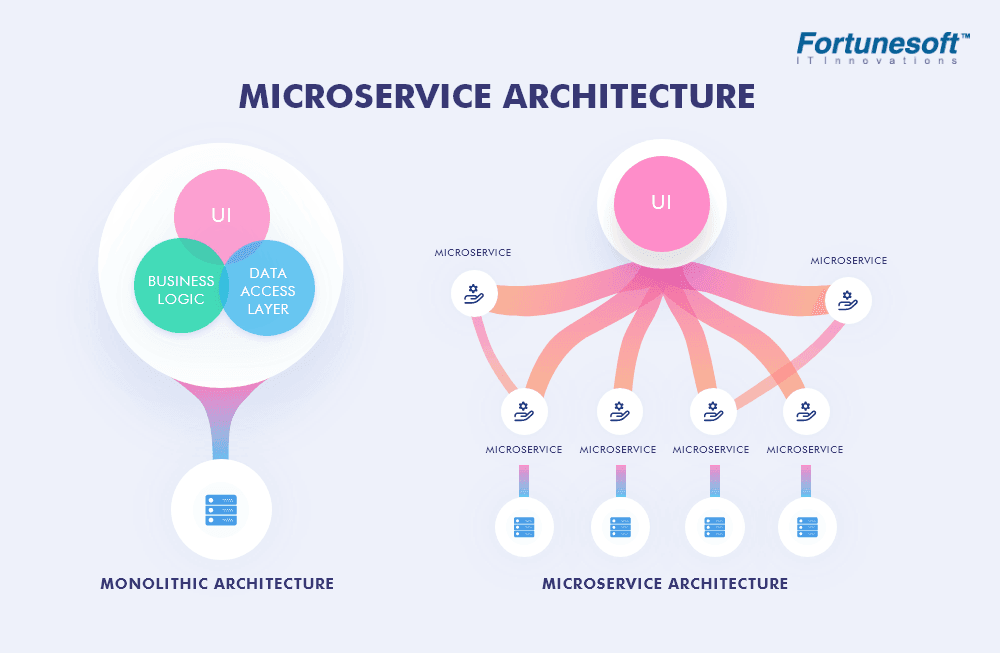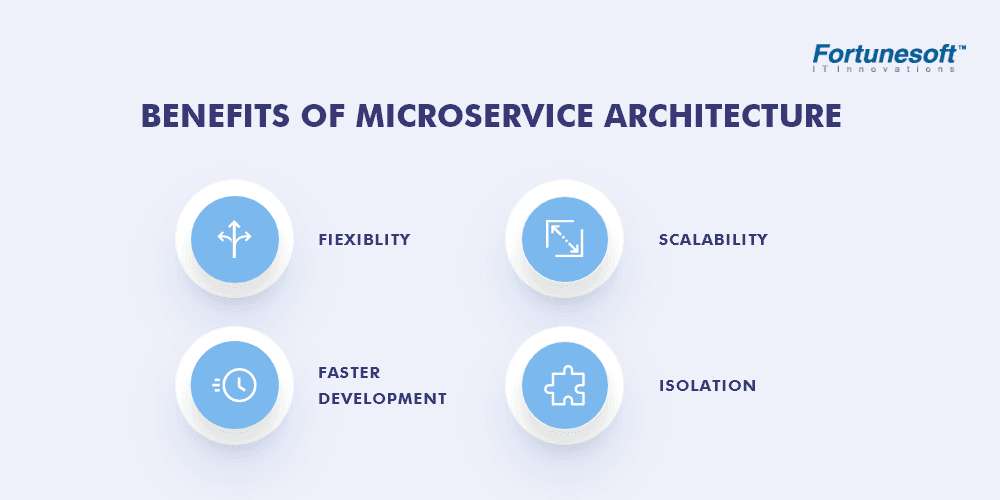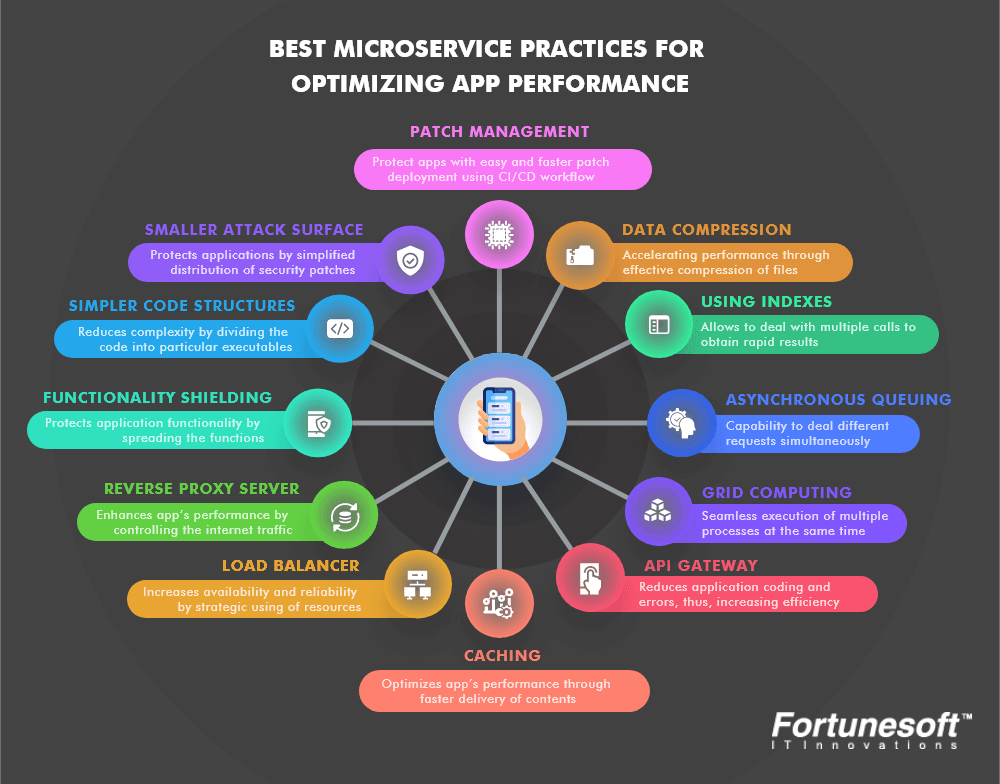 By Jeevan Babu November 24, 2020
12 min read
By Jeevan Babu November 24, 2020
12 min readOptimize your application performance with microservice architecture
Businesses are continuously striving to pace up with the ever-changing market trends. Embracing digital transformation for business growth has made modernizing applications a mandate task. To enable rapid innovation in products and processes, businesses are looking to redesign and migrate their legacy applications to latest technology designs and architectures. This will help businesses to offer the latest functionalities catering to the current and futuristic goals to all the stakeholders.
The bandwagon of digital transformation has powered up businesses to leverage the benefits of disruptive technologies such as Microservices, DevOps, Cloud, Containers, Artificial Intelligence, and many more, to respond to the requirements of both internal and external customers seamlessly.
Why is Microservice the buzzword?
Businesses are looking for solutions that will help them to build and deploy applications quickly. Moreover, businesses are looking for digital solutions that keep the services more competitive, relevant, in-demand, and responsive to current and futuristic demands of the market. Therefore, to add value to the existing service offered to a broad range of customers, organizations are focusing on microservice adoption for their business critical applications.
As per the stats by Market Research Future, the microservice architecture adoption is forecasted to be USD 33 billions by 2023 with a CAGR of 17%.

Fig. Microservice Architecture Market Adoption from 2016-2023
Therefore, it can be said that microservice architecture is widely adopted by numerous verticals for software application development that includes large enterprises, small industries, and startups.
How microservice architecture can be leveraged to optimize your business applications?

Fig. Monolithic and microservice architecture
Microservice segments your large application into independent smaller modules. Each module supports a precise goal efficiently. The modules can communicate with each other seamlessly. As these modules are independent, they allow different services to be written in different programming languages. Also, every module can be handled by various teams effectively.
Today microservice architecture is everywhere. Whether eCommerce, fintech, travel and hospitality, health care, or fashion and lifestyle, microservice has become an ideal choice for storing data and information at low cost with increased efficiency, agility, and scalability.
Benefits of microservices for enhancing applications?
If you are looking to modernize your applications for gaining:
- Agility – Optimize agility of new feature delivery
- Speed – Quick development and deployment of products and services
- Integration- Seamless third party integrations to the application
- Scalability- Ability to handle load spikes at any event
- Performance- Faster rendering and availability of applications with zero downtime.
- Security- Upgraded security by finding, fixing, and preventing security vulnerabilities
Microservice is for you!
What benefits do you get by adopting microservices for your business?

Fig. Benefits of microservice architecture
Microservice architecture has a lot of benefits to offer. 63% of businesses are exploiting microservices to improve their app’s performance, increase satisfied customer base, employee efficiency, and reduce operational and infrastructure costs. Some undeniable benefits of adopting microservices are:
Flexibility
Due to autonomous deployment of microservices, error correction and app releases are simplified and handled efficiently. New functionalities are added to the app easily without modifying the structure. Also, in case of failure, you can easily undo the updates made to the application and reduce downtime of the whole system unlike traditional systems. With microservices, the developers have the flexibility to choose a secure tech stack for their product and project that works best making it fast and efficient.
Quicker development
As the entire application is segmented into smaller services or modules, managing each module is easy and efficient. Every module is managed by a team and therefore, the collaboration among small teams is effective and helps in building apps faster with seamless communication and less management issues.
Scalability
Microservices are independent in nature. Therefore, both the module and the entire system as a whole is scaled. But, the subsystems can be scaled up and down depending on the load. Therefore, microservices has the capability to cope up with the expanded and decreasing load and can perform well in both conditions. As per the reports by an IT research firm, Microservices enhances scalability apps by 64% and app resilience by 50%.
Isolation
Microservices are isolated and resilient in nature. If any one of the services fails, the application work won’t get affected and the team can exploit another service. The isolation feature of microservices is an impeccable asset for small IT teams, agile methodology, and products that need to be scaled frequently.
Improving your app performance with microservice

Fig. Best microservice practices for optimizing app performance
To improve your app performance, check out the following microservice practices.
- Patch management
To maintain the operational availability, confidentiality, and integrity of IT systems, patching is critical. One of the major concerns for enterprises is patch management. Missing patches in the OS and applications cause network security breaches.
With well-defined comprehensive patch management, various cloud platforms and other third-party applications are protected against vulnerabilities. This further reduces the possibility of crashes and downtime, increasing productivity levels.
Many leading organizations are using patches to send new features and functionalities for helping their clientele work better and smarter. Patches, in other words, provide an opportunity to tap into the latest feature and functionality updates and innovations of the software thus not limiting it to only fixing bugs.
Organizations adopt DevOps to accelerate the development cycle through continuous integration and delivery with quality, scalability, and security, driving microservice deployment.
With microservices, patch deployment is easier and faster. Many enterprises use CI/CD workflow for seamless, rapid, and consistent patch deployment. Technologies like immutable infrastructure and automation can be strategically used to patch the systems and apps. This reduces software bugs and security flaws in an application.
- Smaller attack surfaces
The number of vulnerabilities in an application is termed as the attack surface. Therefore, it is better to have a smaller attack surface, further reducing the risks. With microservices, as every service is independent, every service owns an attack surface but of smaller size.
Every application is of different sizes and has its complexities. A small application will have fewer vulnerabilities as compared to its larger counterparts. With microservices, each service offers a restricted set of functionality and exposes a well-restricted interface. The service will have those requisites necessary to support the particular function or task that the service is designated for.
The microservice approach offers a small attack surface due to its modular structure. This further simplifies the task for security professionals in distributing security patches as compared to the patch distribution in monoliths.
- Simpler code structures
Another issue with the monolithic applications is difficulty in identifying what a software executable has. It means that one group’s security issue may have complications for other group’s code contributions and that group might be unaware.
Microservices resolves this issue as the code is divided into particular executables. In enterprises, generally a single development group takes up the full responsibility for all the code running in an individual service. Therefore, it’s much easier to have peer collaboration within a small group that works on a common codebase unlike in a huge monolithic codebase where the collaboration is among several teams.
- Functionality shielding
One of the popular benefits of microservices is its capacity to handle a defense-in-depth strategy. Rather than having all the functionality deployed in front-line service, microservice spreads the functionality. Rest of the application functionality resides in other services that can only be accessed by other application executables. This protects application functionality from the attackers and makes it harder to access the non-user-accessible functionality.
- Reverse proxy server
The remedy for performance issues of a web application running on a single machine is getting a faster machine with more RAMs, processors, and other requisites. The new machine can run on any server faster than before.
The actual problem arises when the performance problem is not the system speed. The system carries out multiple tasks such as- communicating with users on thousands of connections, running application code, accessing a file from disks along with other tasks. This causes the web apps to run slow. The app server might be crushing down – switching chunks of memory out to disks, running out of memory and so on.
A reverse proxy server is situated in front of the machine running the application and controls the internet traffic. The reverse proxy server is only connected to the internet; communicating with the app servers with a fast internal network.
You can leverage the following benefits of using a reverse proxy server:
- Balancing the load
- Enhanced performance by caching content and web acceleration
- Global server load balancing
- Efficient and secure SSL encryption
- Reliability
- Protection from DDoS attacks
- Load balancer
A load balancer is a great technique to improve app performance with microservices and security of your website. Rather than opting for a core web server which is bigger and powerful, you can implement a load balancer to distribute the traffic across a number of servers.
In spite of having an application which is poorly written or faces scaling problems, a load balancer can improve the user experience without any further changes.
Load balancing offers an optimized use of available resources, throughput maximization, minimized response time, and avoids overload of any single resource. Load balancing increases architecture availability and reliability by using multiple resources rather than a single component.
- Caching
Caching improves app performance by delivering content faster to clients. Caching involves processing content for fast delivery, storing content closer to users and processing content on faster devices.
Caching is categorized into two :
Caching of static content: Files which are changed less frequently such as JPEG, PNG files and code files ( CSS, JavaScript ) which can be kept on the edge server for quicker fetching from the memory.
Caching Dynamic content: Several web apps generate fresh HTML when a page is requested. If you cache one copy of generated HTML for a shorter period of time, then you can drastically reduce the total pages that have to be generated while delivering fresh content which will meet your requirements.
- Data compression
Compression is a major performance accelerator. They are engineered very carefully and highly effective compression standards for pics(JPEG & PNG) and videos (MPEG-4) and music (MP3). Text data includes HTML, CSS, and code such as JavaScript is often transferred uncompressed. Compressing these formats of data can have an unequal impact on web app performance, particularly for clients with slow mobile connections.
SSL compression reduces the volume of data that has to be SSL-encoded, which cancels out the CPU time needed to compress data.
- Using indexes
Indexes can be used to find smaller snippets of data within a wide amount of information. Index tables allow a quick search to deal with all the calls and get the necessary results rapidly. Be aware that these tables become unmanageable with growing amounts of data.
- Asynchronous queuing
If there is a need to deal with numerous requests simultaneously, asynchronous queuing can be used. With asynchronous queuing, the visitors can perform the desired actions while the query is still under process contrasting the traditional method.
- Grid computing
With grid computing, the resources of each computer are distributed between every other computer in the system. The grid computing model allows an organization to execute the different processes at the same time.
- API gateways
Consider you need to support smartphone native applications, browsers, and server-side applications. Each of these clients requires a separate set of microservice features to support. Microservice API gateway creates a separate API for all of them so that each respective client can view only those features that they are expecting to see. This custom API for every application, in turn, offers a faster and easier application writing process.
API gateways have offered a wide array of opportunities to reduce coding time and errors. One of the common requirements while requesting for access is the set of protocols that are needed for accessing a particular microservice. In a client application it is difficult to access each and every microservice with its respective set of protocols. With microservices API gateway, each microservice receives requests using the needed protocol and can use the protocol that serves them the best. This is protocol translation. Thanks to protocol translation, the developers can focus more on the programming aspects rather than concentrating and focusing on the set of protocols they need to access a certain microservice.
In a nutshell
The performance improvements for web apps vary drastically, and it primarily depends on your budget, invested time and gaps in your existing implementation. Microservice hosts numerous benefits like faster development, quick releases, capability to handle system failures, highly scalable, flexible with any technology, and enhanced operational efficiency. Every organization wants to excel and microservice paves the way towards it.
It requires a careful approach, planning and intense technical expertise to improve the performance of your web and mobile application using microservices. You can consult a leading Microservice solutions company to streamline both client and engineer experience, and build interactive, scalable, and reliable web and mobile applications for you.
Author Bio


 Facebook
Facebook Whatsapp
Whatsapp LinkedIn
LinkedIn Pinterest
Pinterest











 Start Chat
Start Chat